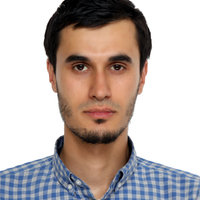To assist Nuclear Power Plants (NPPs) in achieving a reduction in costs while maintaining an adequate level of reliability and safety, a publication by some of the authors of this paper proposed a two-step risk-informed strategy,... more
To assist Nuclear Power Plants (NPPs) in achieving a reduction in costs while maintaining an adequate level of reliability and safety, a publication by some of the authors of this paper proposed a two-step risk-informed strategy, including (i) the streamlined approach and (ii) the advanced approach, which helps address emergent safety concerns and/or enhances enterprise risk management. The streamlined approach is a bounding risk-informed method to demonstrate compliance with regulatory requirements. The advanced approach considers a higher degree of explicit incorporation of temporal and spatial aspects in order to operationalize underlying failure phenomena models associated with events in Probabilistic Risk Assessment (PRA). To facilitate efficient execution of the advanced approach in addressing emergent safety concerns for NPPs, the researchers developed an Integrated Probabilistic Risk Assessment (I-PRA) decision-making algorithm. This paper extends that I-PRA algorithm, creating an I-PRA risk-and cost-informed decision-making algorithm, which has two additional features: (i) it includes the streamlined and advanced approaches in a unified decision making platform that allows an efficient and gradual increase of the degree of realism within a broader spectrum from bounding assumptions to the required higher resolutions; and (ii) it accounts for the costs associated with the risk-informed approaches in addition to considering regulatory safety criteria. The feasibility and value of the new algorithm are demonstrated by conducting a Fire PRA case study.
Research Interests:
A methodological and computational platform called, "SoTeRiA-Fire," is developed to automate the "Fire Scenario Selection and Analysis (FSS)" step in the Fire Probabilistic Risk Assessment (PRA) of Nuclear Power Plants (NPPs). Although... more
A methodological and computational platform called, "SoTeRiA-Fire," is developed to automate the "Fire Scenario Selection and Analysis (FSS)" step in the Fire Probabilistic Risk Assessment (PRA) of Nuclear Power Plants (NPPs). Although the SoTeRiA-Fire reflects the guidelines of NUREG/CR-6850 and ASME/ANS RA-Sa-2009, it can help NPP reduce resources required for Fire PRA implementation by (a) automating the pre-processing of input data, execution of a fire model, and post-processing of outputs for various tasks in the FSS and (b) providing a mechanism to gradually increase the realism of FSS while screening out insignificant scenarios. The fire hazard propagation event tree in SoTeRiA Fire includes multiple pivotal events: (1) initial fire ignition, (2) ignition of secondary combustibles and fire spread, (3) formation of damaging conditions for target equipment and cables, (4) failure of detection and suppression systems in the exposing compartment containing the initial fire source, (5) failure of fire barriers, and (6) failure of a suppression system in the exposed compartment. The SoTeRiA-Fire assembles the input parameters, conducts required input data processing, and constructs the input files for the Consolidated Model of Fire and Smoke Transport (CFAST) fire simulation program. It then analyzes various combinations or ranges of key input parameters based on the fire propagation event tree logic and prepares the outputs to be post-processed for FSS. SoTeRiA-Fire is applied in a plant and the results are reported; however, the code is applicable for various fire compartments in NPPs and can automate resource-efficient screening for single-or multi-compartment fire scenarios.
